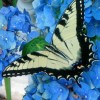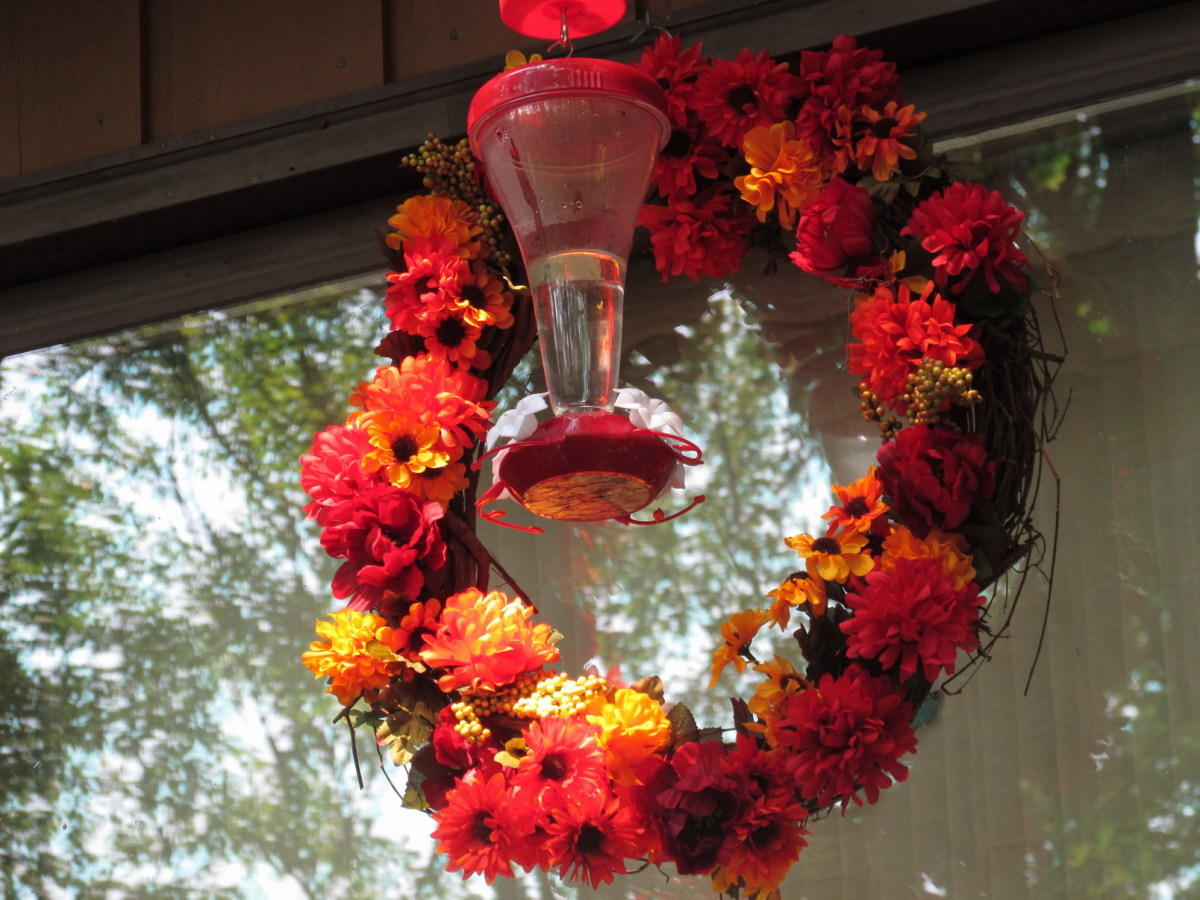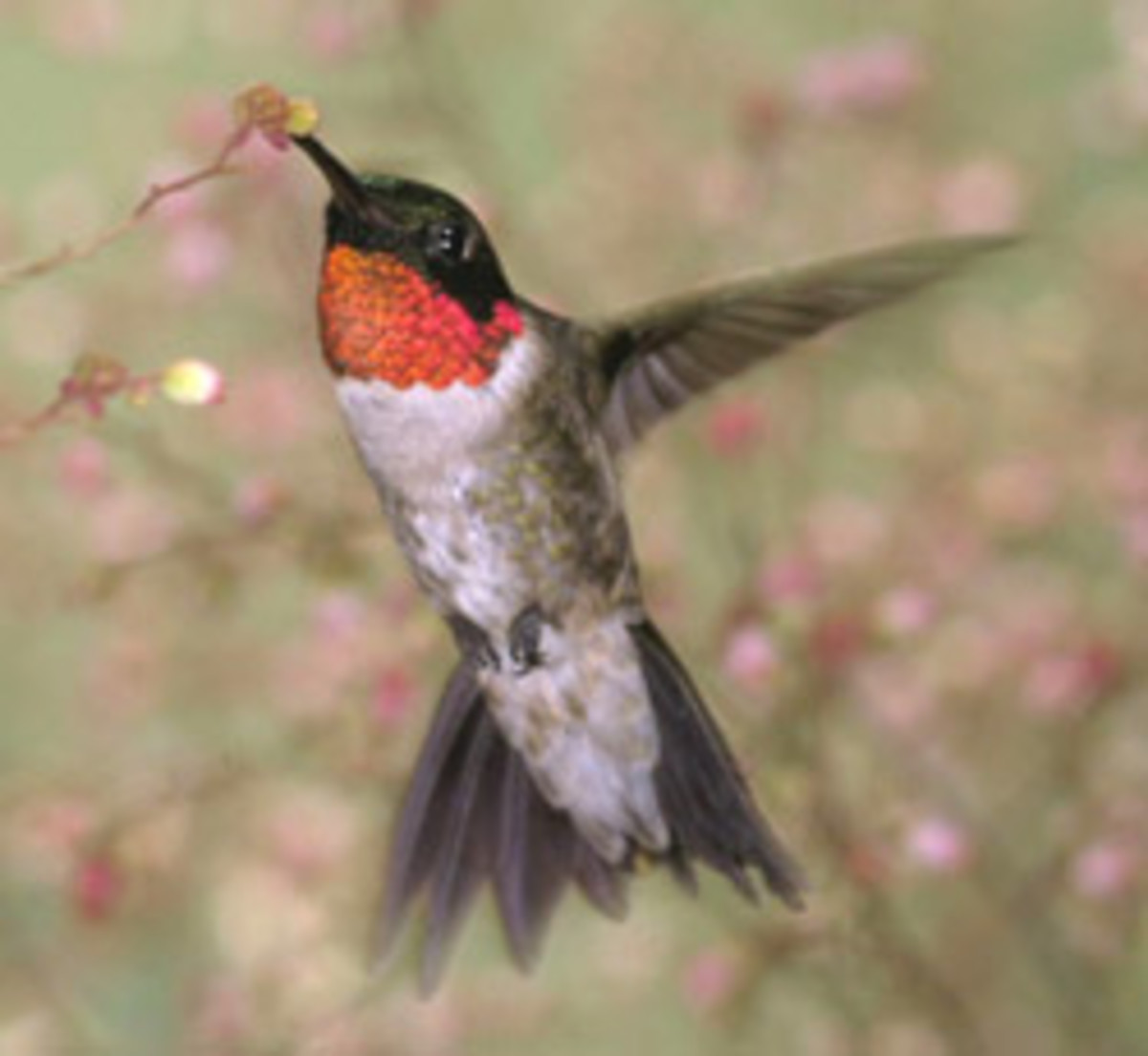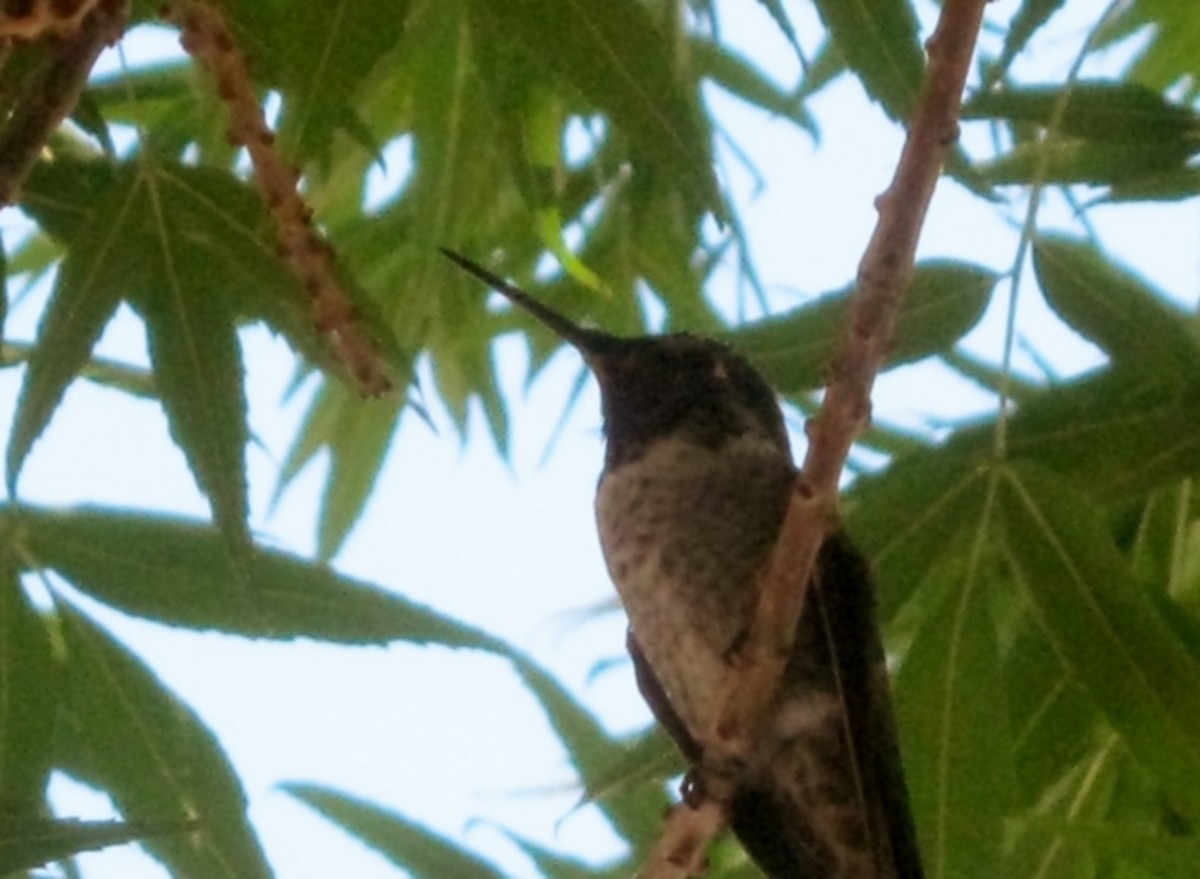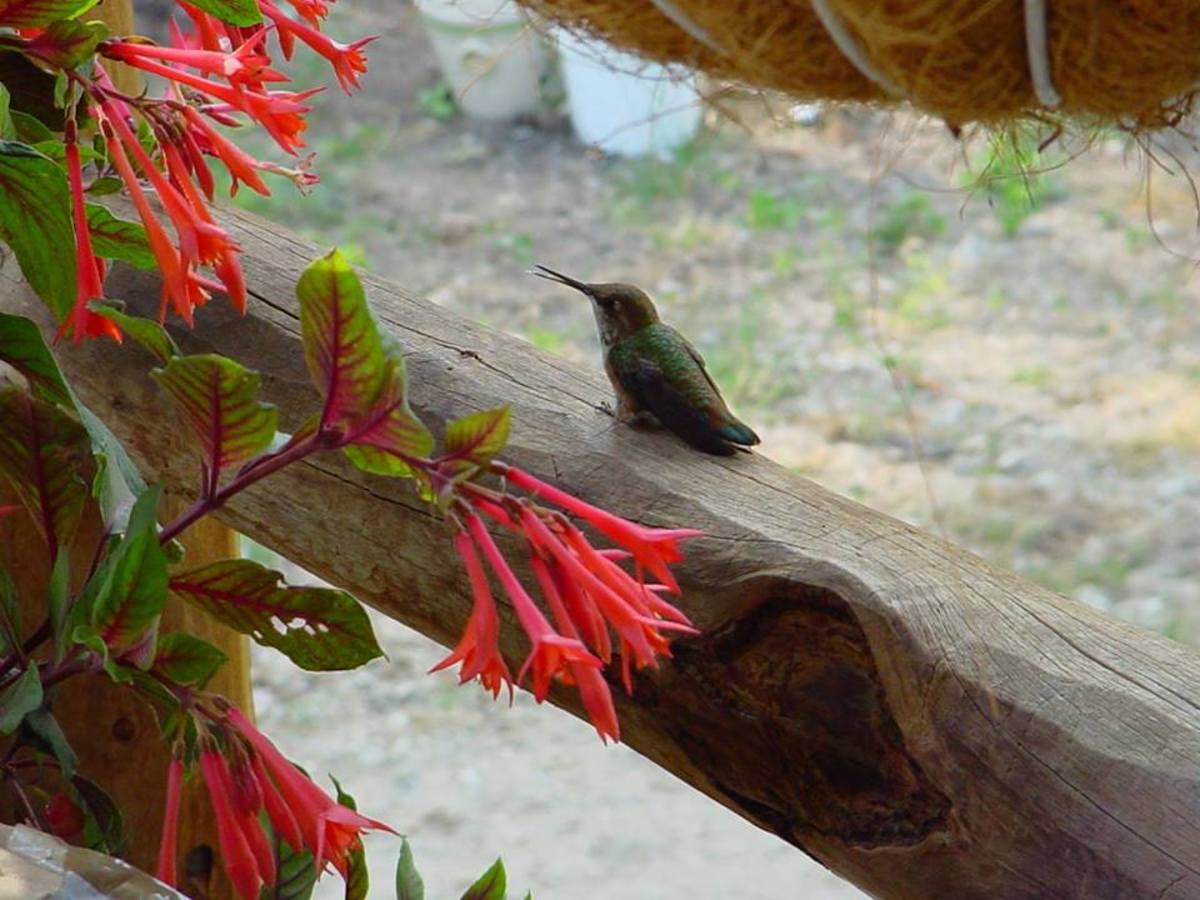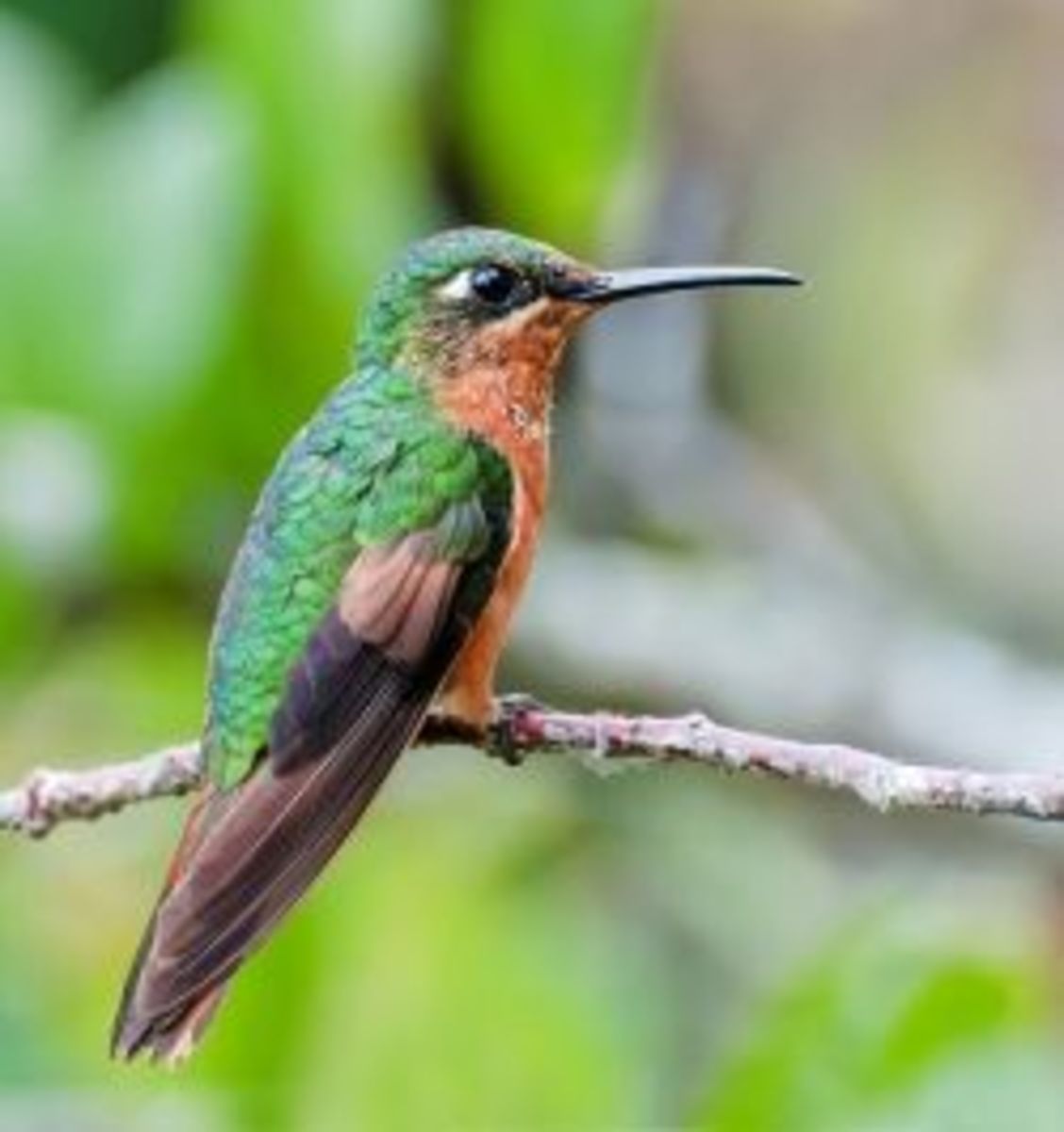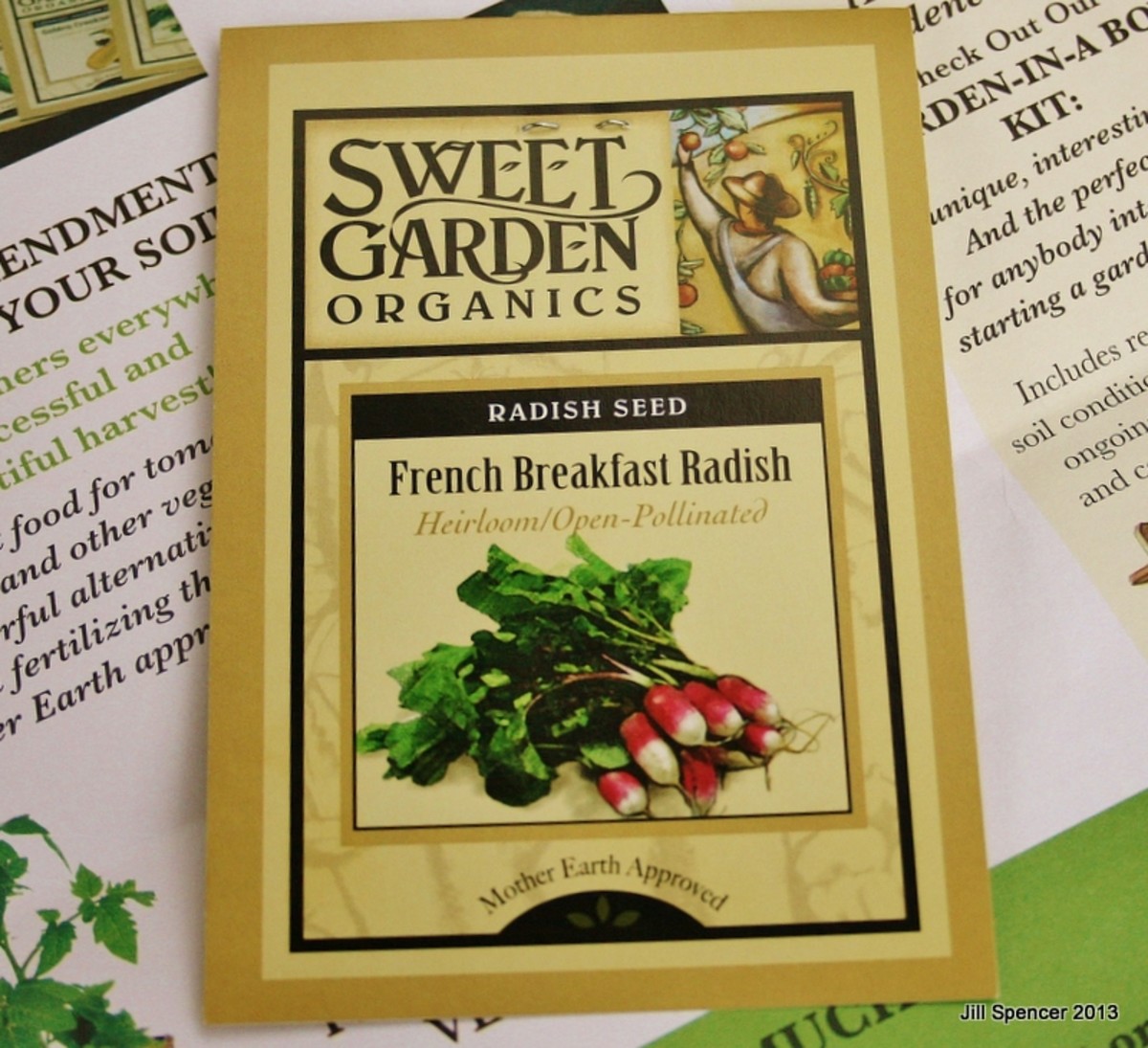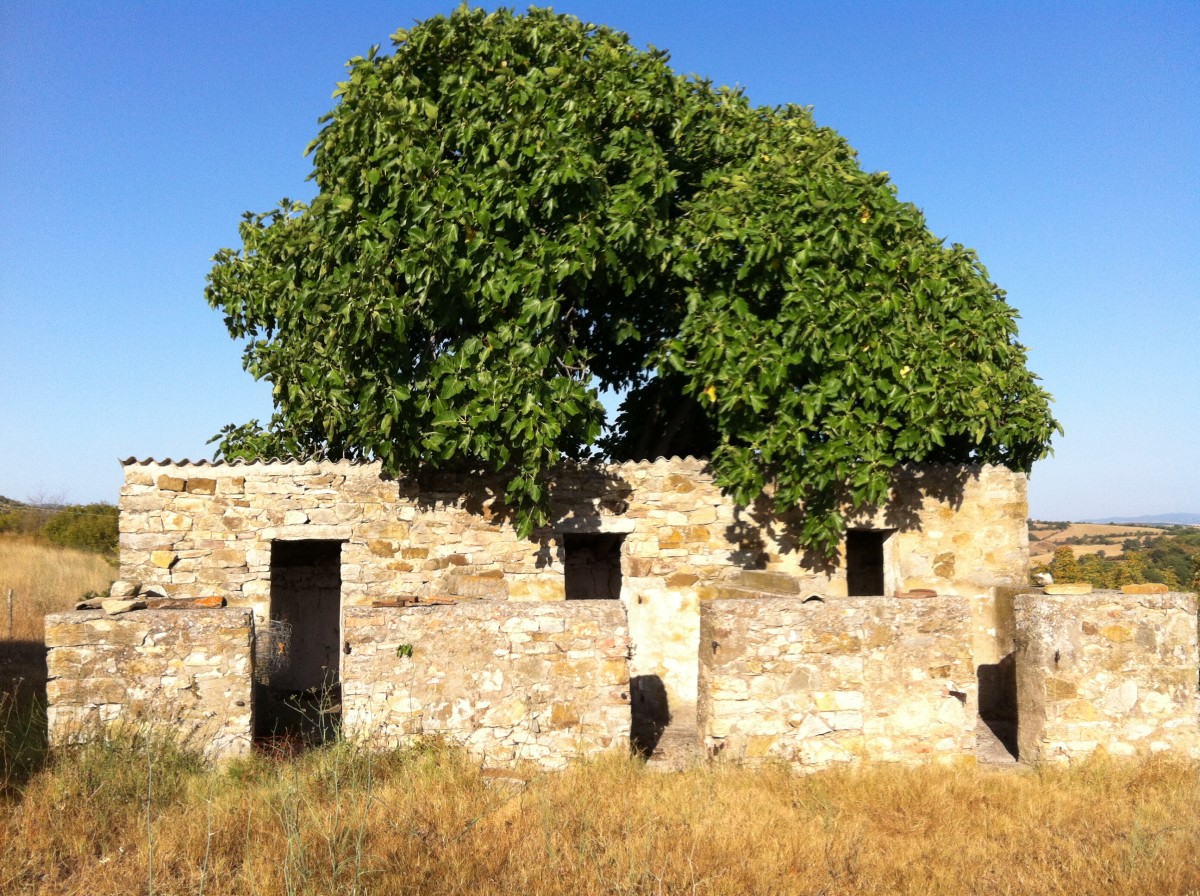Nature Notes - the Hummingbird Feeder War
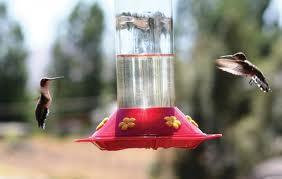
There's a Fierce War Going On...
My hubby and I have been avid birdwatchers for decades. We keep the binoculars close by and are always on the lookout for a new visitor to our bird-friendly yard which includes every kind of tree, shrub or plant that is attractive to birds, butterflies, moths, bees and even wasps. We believe all things in nature work together. Our little copy of Peterson's Guide to Birds is falling apart from use. It has a life-list inside the back cover where we list the date of each visit. This year we spied a towhee, and we looked up the late date we had seen one which was in 1984. Each spring we put out the hummingbird feeders because hummers are the most fun to watch. It is amazing that they seem to arrive at almost the same day every spring. But hummers are very competitive and fiercely guard what they must believe is "their" personal feeder. Around and around they go all summer long...
There's a fierce war going on, but it's not the one you think. This is the War of the Hummingbirds, an unrelenting battle between four ruby throat hummingbirds who have fought each other at our hummingbird feeder from dawn to dusk since spring.
We think it is two mated pairs. But the males are so greedy they often will not allow the females to drink from two red plastic hummingbird feeders filled with our own homemade hummingbird feeder recipe made from half filtered water and, for the first feeding use half sugar/water because they have been on a long journey north. The next time we fill the feeder it will be with one-quarter sugar to a full bottle. The red plastic hummingbird feeder is the best one for attracting the little guys. We have been feeding hummingbirds this sugar-laden recipe for several years and they can't get enough.
We observe the war within the confines of our screen porch. One hummingbird feeder hangs just on the other side of the screen. The other, in a white pine, a few yards to the south.
Hummingbirds Fighting at Feeder
A Long, Fierce Battle Continues
The war is in it's second year. The battlefield is the air space anywhere in the vicinity of the feeders. One male, flashing his ruby throat, holds vigil in the dogwood, about midway up. He's waiting, turning his head from side to side, watching for the invaders. He warbles to himself. A warrior.
As soon as one of the other three hummers approach the porch feeder, he dives towards them, sometimes actually connecting. They climb skyward in fierce battle, circle the house and return to their stations in the nearby dogwood trees.
Today, September 21st, one lonely female hummingbird continues to visit the porch feeder. Perching in the nearby dogwood where the male usually stood watch, she preens, emitting chirps as she goes about the task.
We're wondering whether her mate was a casualty of the war, or could it be, she won?
We'll know next spring.
Stay tuned.
My Hummingbird Feeder Food Recipe
My recipe for the "nectar" that I put in my feeder is simply half water and half sugar when the hummers first appear in the spring after their long journey. We attract many hummers using this simple recipe. I reduce the sugar to a third after a couple weeks. I don't add any coloring. Just boil the water, add the sugar and stir until dissolved.
Coral Bell is known to attract hummingbirds
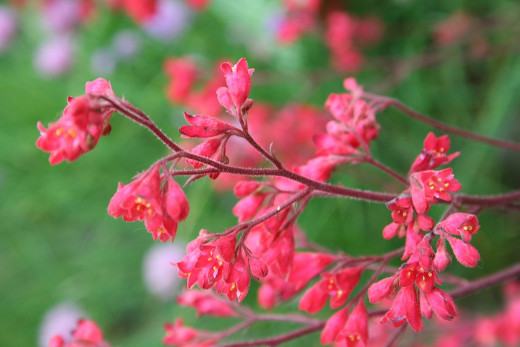
How to Grow Coral Bells
Easy to grow, Coral Bell (Heuchera), also known as Alumroot, is a perennial plant that favors the shade and often used in a woodland garden although they can also be grown in pots. Flower colors include white, pink, coral and red. The leaves vary in color bronze to pink and green. Hummingbirds are attracted to the color red, so keep that in mind when shopping for Heuchera. Coral Bell are hardy to USDA Plant Hardiness Zone 3. They do not require any special treatment and are easy to grow.
Other Plants that Attract Hummers
If you want to attract hummingbirds to your yard, keep in mind that hummingbirds are attracted to the color red when you choose to plant the following:
* Hummingbird Mint (Agastache)
* Cardinal Flower (Lobelia Cardinalis)
* Coral Bells (Heuchera)
* Lantana (Lantana Camara)
* Petunia
* Snapdragon
* Weigela
